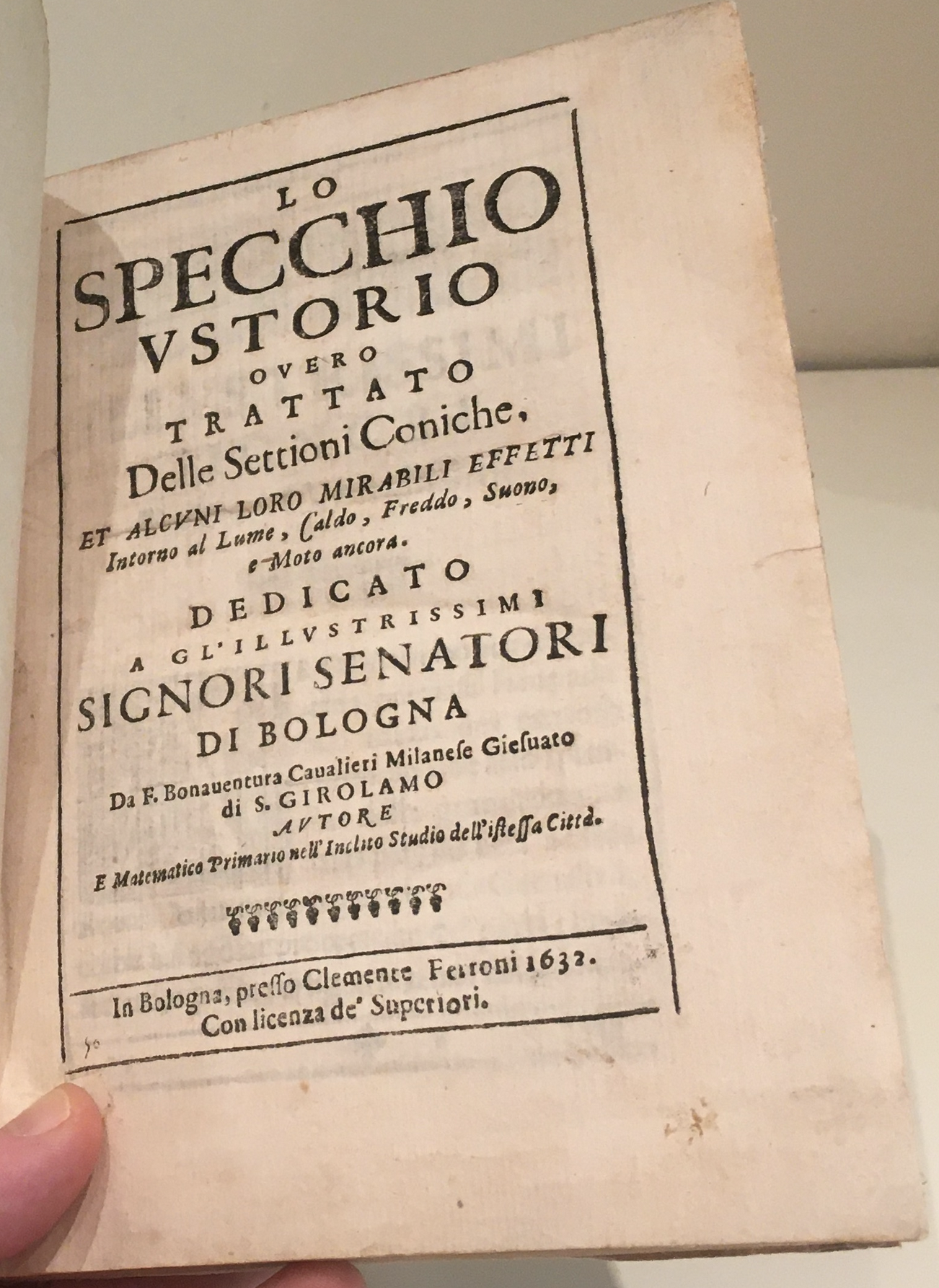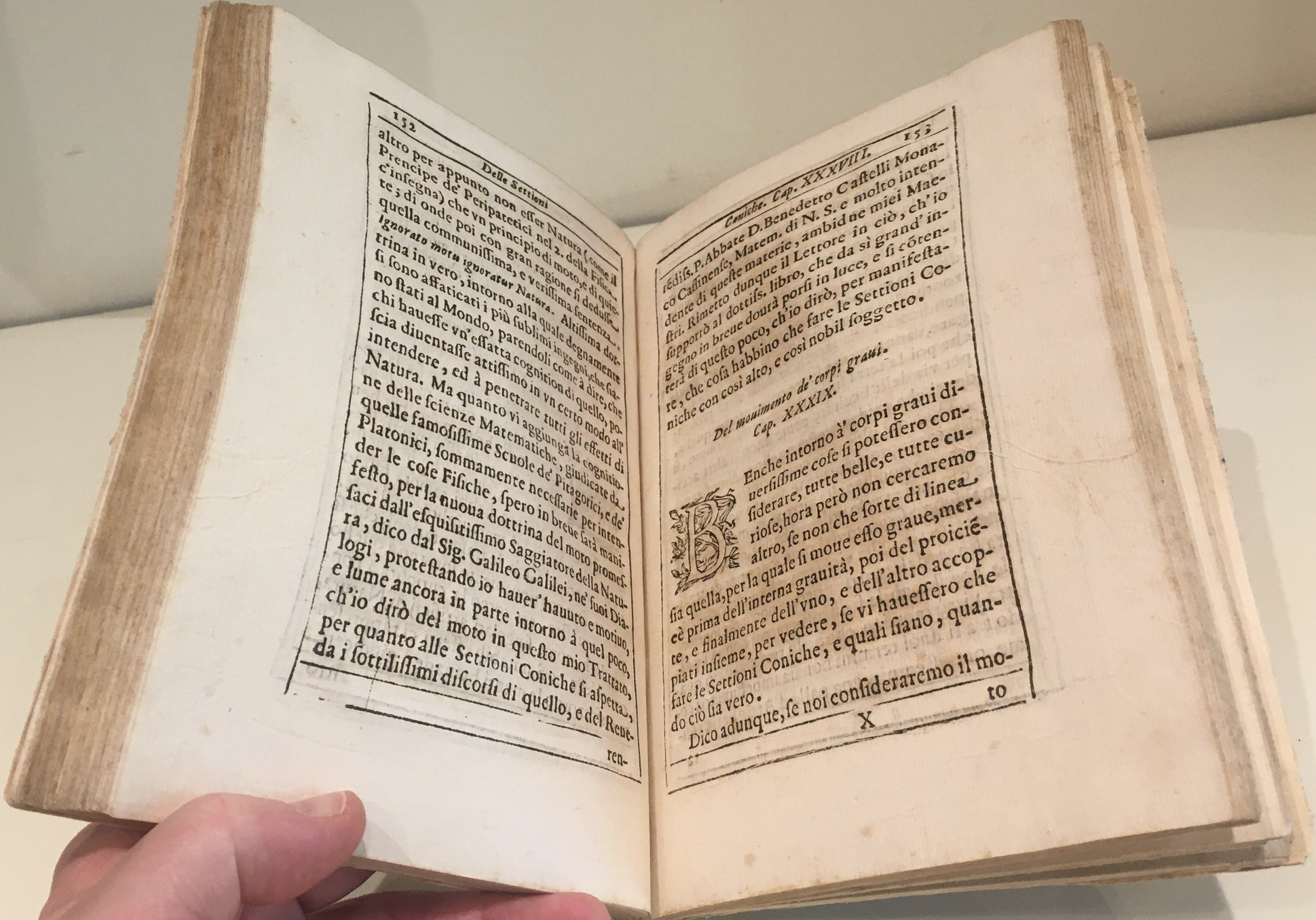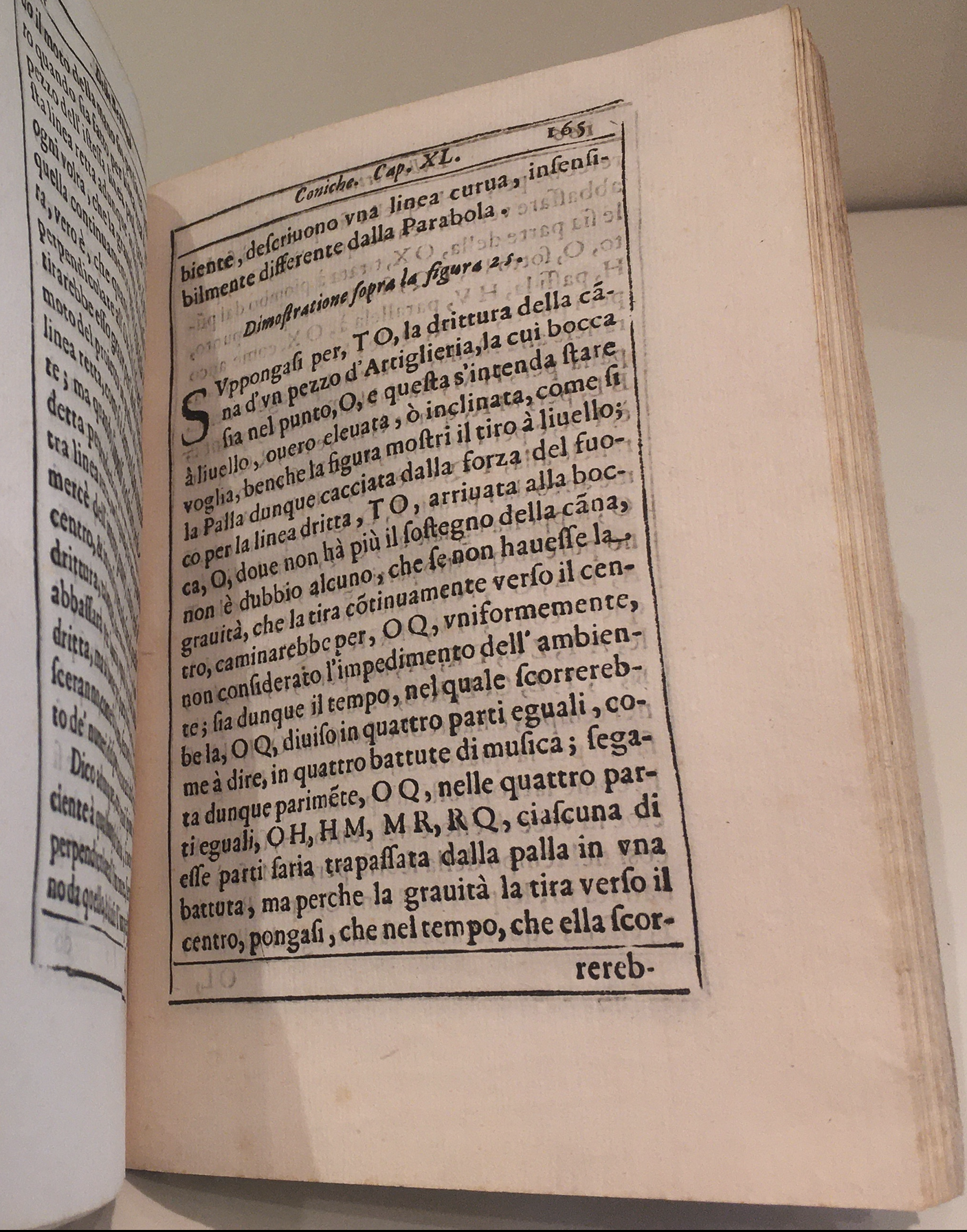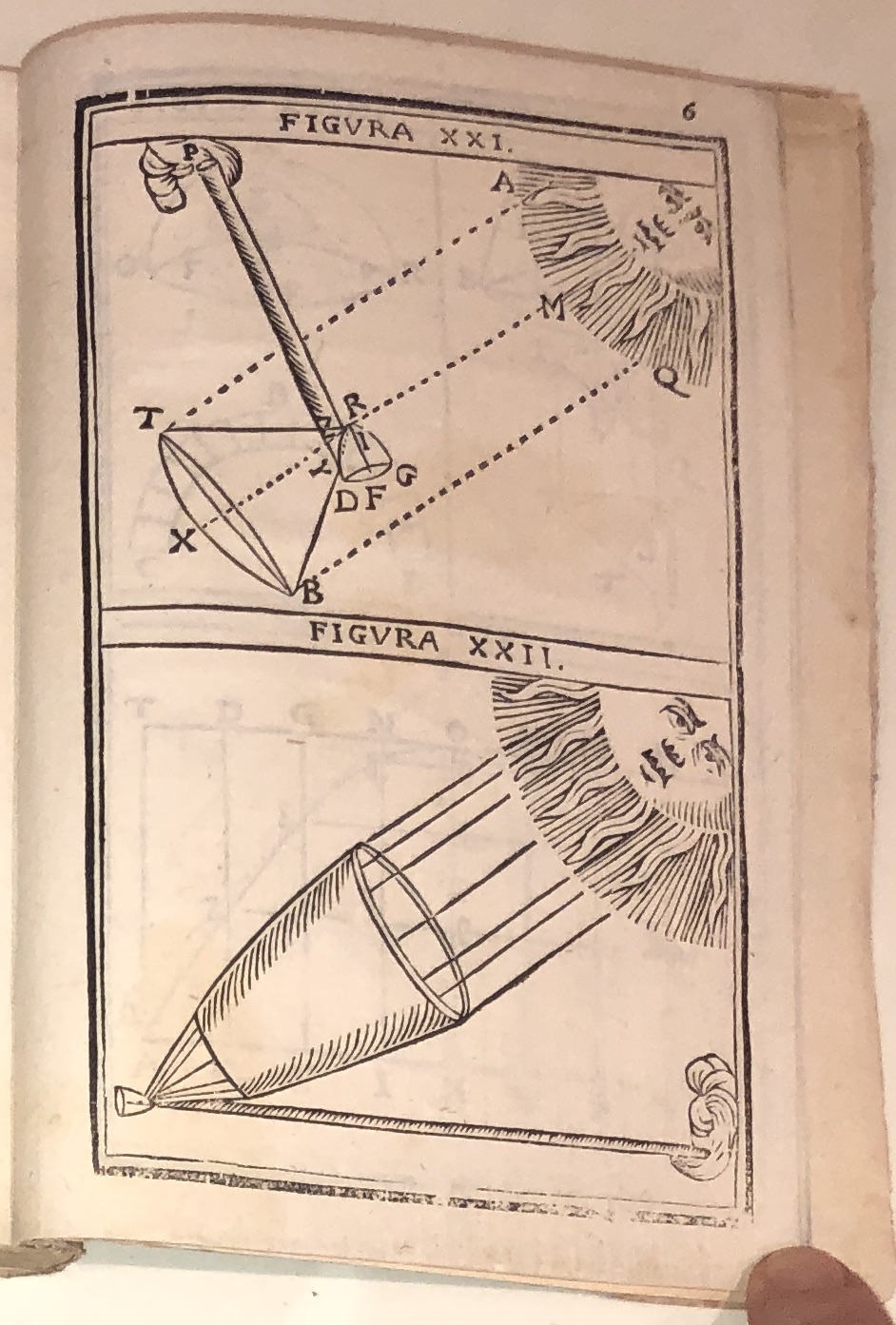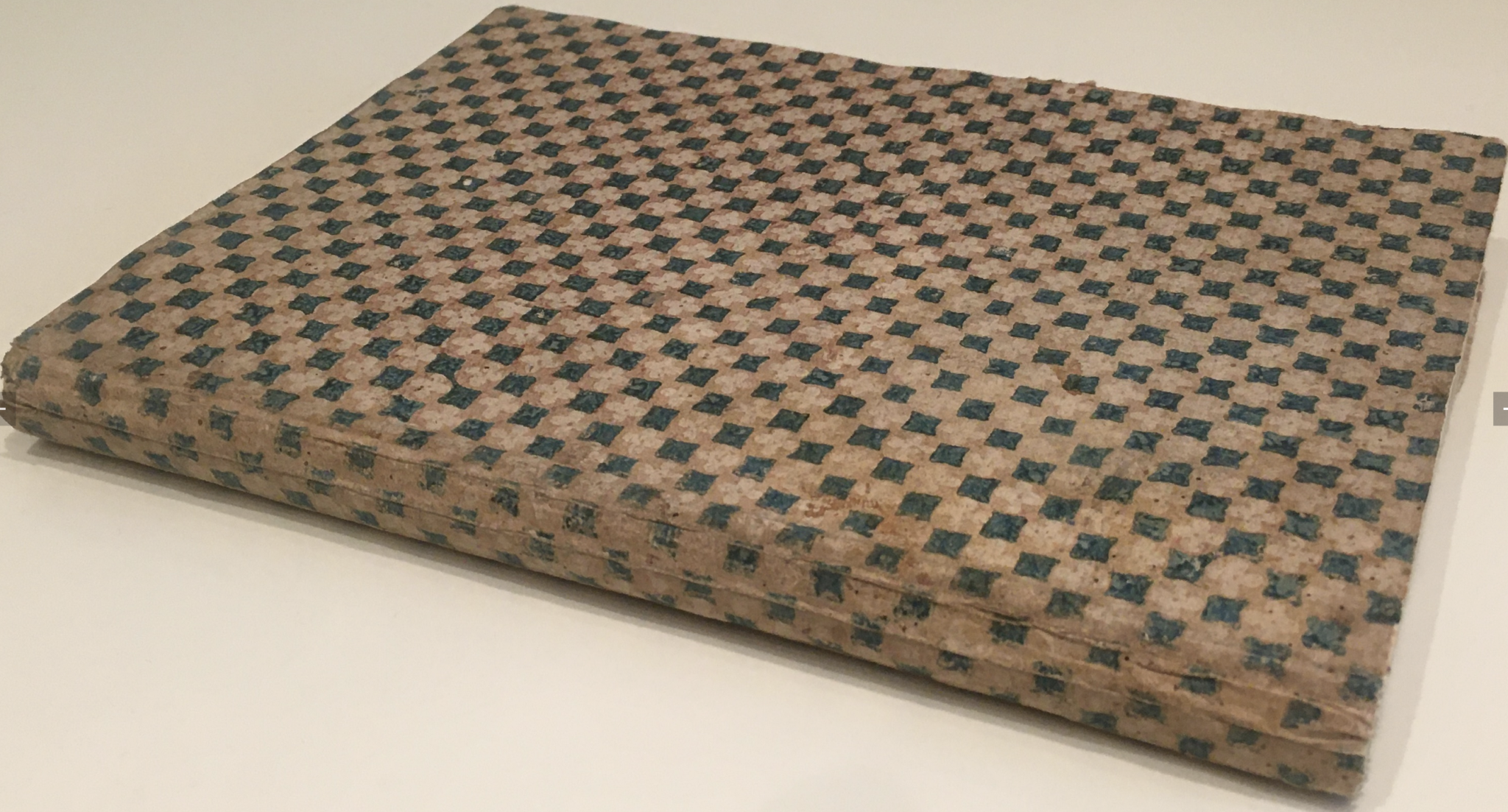Description
CAVALIERI, Bonaventura. Lo Specchio Ustorio overo trattato delle settioni coniche, el alcuni loro mirabili effetti intorno al lume, caldo, freddo, suono, e moto ancora … Bologna: Clemente Ferroni, 1632.
First edition, rare, of Cavalieri’s highly important treatise on conic sections and their applications in optics, acoustics and, perhaps most significantly, mechanics. Its importance in the history of the telescope is well-known: “Cavalieri’s design may well have been in all the essentials a direct anticipation of Newton’s reflecting telescope. Clearer and stronger, however, is the claim that Cavalieri anticipated the Cassegrainian telescope” (Ariotti, p. 316).
But the importance of ‘Specchio’ in the history of mechanics may be greater, as it was in the chapters (38-40) of this work devoted to motion that Cavalieri first published the discovery that the path traversed by a projectile moving under gravity is a parabola. Although this was certainly known to Galileo (and to Thomas Harriot) at the time (and Cavalieri credits Galileo with the discovery), Galileo did not publish it himself for another six years, in the ‘Discorsi’ (and Harriot never published it). “Galileo’s ‘Dialogo’ was not the only work to anticipate some of the results later presented in the ‘Discorsi’. In that same year Cavalieri published ‘Lo specchio ustorio’, in which he devoted two chapters to falling bodies and parabolic trajectories relying on his new mathematics. Cavalieri was readying for publication ‘Geometria indivisibilibus’ (1635), his mathematical masterpiece on the method that dominated mid-century infinitesimal mathematics. Cavalieri attributed to Galileo his main results on motion, such as the odd-number rule and parabolic trajectories. As to the latter, he stated that, neglecting gravity, the trajectory of a body shot at any angle would be rectilinear, and he tried to prove the relation [distance fallen under gravity is proportional to time squared, from which the parabolic nature of the trajectory is a straightforward deduction] with his indivisibles” (Meli, p. 91).
“In this work, we find a theory of conics with applications to optics and acoustics. Among the former, we note the idea of the reflecting telescope, of which – according to Piola and Favaro – Cavalieri was the first inventor, preceding Gregory and Newton; determination of the focal length of a lens of uneven sphericity; and explications of the burning glass of Archimedes. In the field of acoustics, Cavalieri attempted the archaeological reconstruction of the resonant vases mentioned by Vitruvius and used in theaters for amplifying sound” (DSB). In the optical chapters, Cavalieri refers frequently to Kepler’s ‘Dioptrice’ (1611).
Cavalieri (1598-1647) was an outstanding mathematician, and a friend and disciple of Galileo, although the publication of the present work caused a temporary rift between them – Galileo believed that Cavalieri had published some of his [Galileo’s] own results on projectile motion, then still in manuscript, without permission. The dispute was resolved, and in the ‘Discorsi’ Galileo praised the ‘Specchio’ for its treatment of optics and lauded Cavalieri as a new Archimedes.
ABPC/RBH lists three copies since the Norman copy (which realized $11,500 at Christie’s in 1998). Carli-Favaro 29 (132); Cinti 190 (92); De Caro 63; Honeyman II 642; Norman 418; Riccardi I 323; Ariotti, ‘Bonaventura Cavalieri, Marin Mersenne, and the reflecting telescope,’ Isis 66 (1975), pp. 302-321. Meli, Thinking with Objects, 2006.
4to, pp. [xvi], 224, [1, ‘Avvertimento a Librari’] (p. 92 incorrectly numbered 94), with 36 diagrams on 10 leaves of woodcut plates, woodcut device of San Girolamo on verso of title (lower outer corners of plates a bit soiled, the last with corner chipped but not affecting printed area). Eighteenth-century patterned paper wrappers (a bit soiled).


